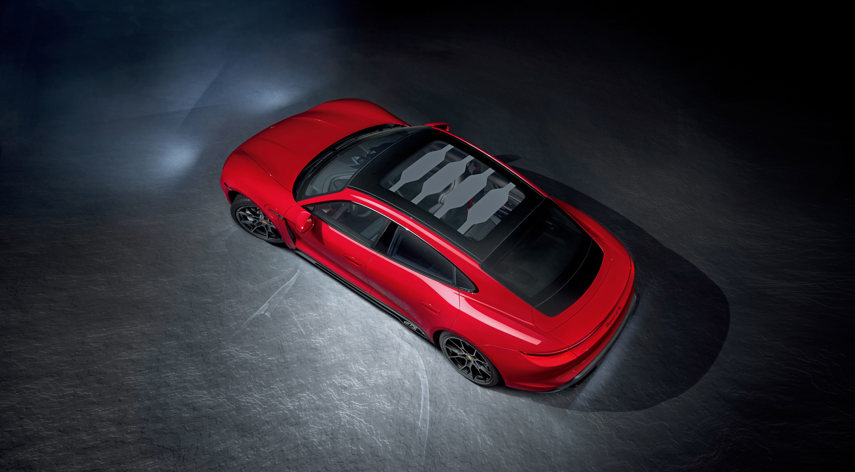If you’d like to get a really good look at the solar eclipse that’s scheduled to appear in parts of Canada on April 8 of this year, you’ll need the right equipment: your vehicle and an ISO-certified eclipse-viewing filter.
Your vehicle is a must because the 2024 solar eclipse will only be seen in all its glory (as a total eclipse) in small parts of the provinces of Ontario, Quebec, New Brunswick, P.E.I., Nova Scotia, Labrador and Newfoundland (check out Solar Eclipse 2024 to see the sun’s exact path). Outside this very narrow path, Canadians will either see a partial eclipse or nothing at all.
Once you’ve driven to your destination of choice, you’ll need a filter through which to safely view the eclipse. We’ve all been told never to look directly at the sun, especially during a solar eclipse, but you may be wondering if it’s safe to do so through the aptly named “sunroof” of your vehicle if it has one or if you have tinted windows or UV-treated glass.
The answer is a definite no.
Then again, not all sunroofs are made the same. Several manufacturers, including Toyota and Porsche, offer an electrochromic sunroof. Toyota’s “Star Gaze” panoramic glass roof, for example, boasts electrochromic glass technology, which allows you to go from transparent to frosted mode with the flip of a switch, thereby reducing the amount of direct sunlight that gets into the passenger cabin.

If that sounds like the ideal eclipse-viewing sunroof, it isn’t. Romaric Lartilleux, Manager of Public Relations for Toyota Canada explains why. “The simple answer is no, this isn’t a good idea,” he says. “The electrochromic panoramic roofs aren’t designed to watch a solar eclipse.”
Partial vs. Total Eclipse
Dr. Elaina A. Hyde, Director of the Allan and Carswell Observatory at York University, agrees. “Please do not look directly at the sun,” she warns, “even if you have a dark sunroof. You do not want to be looking directly at the sun in normal circumstances, but also, not at any point during a partial solar eclipse.”
Dr. Hyde specifically notes that it’s dangerous to look at the sun during a “partial” solar eclipse, and adds the following explanation: “If you are in the very, very, very small part of North America that is going to experience totality — and totality is only, in most places, one two, maybe three minutes long — then only for those few minutes or seconds is it actually safe, because the sun's light is completely blocked.”
Canadians still shouldn’t risk looking at a total eclipse, even though it’s technically safe to do so briefly, as noted above by Dr. Hyde. Frankly, there’s no reason to take such a risk, especially when you can view the eclipse in other safer ways.
Other Ways to See the Eclipse
Besides safely watching the spectacle on a TV or online, Dr. Hyde says that the easiest way to view the eclipse is with a pinhole camera (there are online tutorials on how to make one yourself). And if you’re thinking that you’ll just whip out your handy smartphone or a camera to view the eclipse indirectly, Dr. Hyde warns against doing so.
“You don’t want to hold anything with a lens up to the sun,” she says. “Your camera and your phone have lenses, so you could potentially fry them.”
There is, however, a way to protect your eyes, your smartphone, camera, or even a pair of binoculars or a telescope from the sun and watch the solar eclipse safely. Dr. Hyde recommends using safety-rated eclipse glasses or filters that can completely cover your eyes, your phone or camera lens, or the entire business end of your binoculars or telescope.
The American Astronomical Society recommends only using, “Solar viewers verified to be compliant with the transmittance requirements of the ISO 12312-2 international safety standard.”
If you’re planning on buying an eclipse-viewing filter or sunglasses, make sure the product is properly ISO-certified.
“If you’re shopping online,” Dr. Hyde warns, “be aware that there are places that do not have actual safety ratings, so if the product does not have the [ISO 12312-2 international safety standard], then it is actually not safe to use to view the sun.”
Is it Safe to Be Outside?
Although some school boards in Canada have decided to keep children home on April 8 just to be safe, Dr. Hyde says that it’s perfectly fine to be outdoors or to be driving your car during an eclipse.
“It’s just a normal day,” she says. “The danger during an eclipse is that people can tell that the sun is doing something different, and they try to look at it to see what’s going on. And that’s what we don’t want people to do.”

